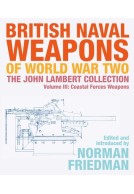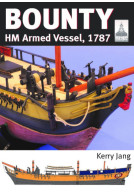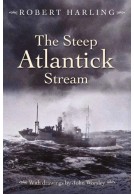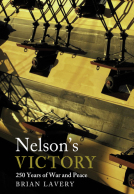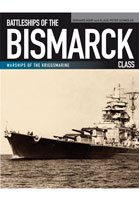British Submarines (Hardback)
in the Cold War Era

Pages: 344
Illustrations: 350 colour & black and white illustrations
ISBN: 9781526771223
Published: 29th July 2021
(click here for international delivery rates)
Need a currency converter? Check XE.com for live rates
The Royal Navy’s greatest contribution to the Allied success in World War II was undoubtedly the defeat of the U-boat menace in the North Atlantic, a victory on which all other European campaigns depended. The underwater threat was the most serious naval challenge of the war so it was not surprising that captured German submarine technology became the focus of attention for the British submarine service after 1945. It was quick to test and adopt the schnorkel, streamlining, homing torpedoes and, less successfully, hydrogen-peroxide propulsion. Furthermore, in the course of the long Atlantic battle, the Royal Navy had become the world’s most effective anti-submarine force and was able to utilise this expertise to improve the efficiency of its own submarines.
However, in 1945 German submarine technology had also fallen into the hands of the Soviet Union and as the Cold War developed it became clear that a growing Russian submarine fleet would pose a new threat. Britain had to go to the US for its first nuclear propulsion technology, but the Royal Navy introduced the silencing technique which made British and US nuclear submarines viable anti-submarine assets, and it pioneered in the use of passive – silent – sonars in that role. Nuclear power also changed the role of some British submarines, which replaced bombers as the core element of British Cold War and post Cold War nuclear deterrence.
As in other books in this series, this one shows how a combination of evolving strategic and tactical requirements and new technology produced successive types of submarines. It it is based largely on unpublished and previously classified official documentation, and to the extent allowed by security restrictions, also tells the operational story – HMS Conqueror is still the only nuclear submarine to have sunk a warship in combat, but there are many less well known aspects of British submarine operations in the postwar era.
Although some of the Cold War activities of British submarines have come to light in recent years, this book will be the first comprehensive technical history of the submarines themselves, their design rationale, and the service which operated them.
This is an expansive and comprehensive work. A detailed study of British submarines of the cold war era by an acknowledged expert in the maritime affairs who was worked for the US Navy and Marine Corps. With over 30 titles to his name this one certainly maintains his reputation for detailed research and readable narrative. Norman Friedmans contribution to amongst others Janes Nay Review and his work as a visiting professor of Operational Research make him well qualified to explain in great detail the many aspects of British Cold War submarines. These aspects include Battery Submarines, the transition to Nuclear powered submarines, midget and strategic submarines. Although the Royal Navy’s greatest contribution to the Allied success in World War II was undoubtedly the defeat of the U-boat menace the underwater threat remained a serious threat post 1945 through the Cold War and remains a significant strategic threat to this day! Norman Freidman shows how evolving strategic and tactical requirements along with new technologies produced successive submarine types. Based on unpublished and previously confidential documentation this work utilises excellent line drawings highly technical appendices on C2 systems, weapons, sonar/asdic and midget submarines along with an excellent bibliography, data tables and a submarine list covering Explorer Class to Astute Class. For the armchair submariners and those with more than a passing interest in the development of submarines this superbly produced work is a must for the bookshelf. Highly recommended.
Martin Willoughby, The Wessex Branch of the Western Front Association
"An illustrative coffee table book that is also an interesting, and at times intellectual, read about the modern Royal Navy."
The Mariner's Mirror
Overall an excellent book, which I would recommend to anyone with an interest in looking deeper into the development of British Submarines over the last 70 years or so.
Navy Net
Read the full review here
There are still some elements that remain secret, but this is certainly the most detailed account of the RN submarine service that I have seen. Among the Actions it features there is the story of the sinking of the Argentine warship Belgrano during the Falklands War. Coupled with the previous volume on the two World Wars this makes for a combined reference of the Royal Navy submarine service that I think will be hard to beat for many years to come. While some parts of the story remain secret, this level of detail from public records is still very impressive.
Military Model Scene
Read the full review here
Video review featured on Scale Modelling Now
Scale Modelling Now
The book is well illustrated, showing the development in both form and engineering of the British submarine and has incorporated some beautiful fold-out copies of the constructor’s drawings.
Casemate Magazine
All in all, a good read and sure to delight.
"Overall, this is an excellent, detailed and comprehensive coverage of the subject and highly recommended for the technical reader or those with an interest in submarines."
Peter Briggs, Australian Naval Institute
Featured in
Maritime Engineering Journal - Autumn 2021
"This book is a must read for all professionals, designers and scholars of modern submarines. Once again it should be recommended reading for all Australian submarine design courses."
Dr Gregory P. Gilbert, Australian Naval Institute
Read the full review here
This offering from Seaforth Publishing, authored by Norman Friedman, provides the reader with an informative, and rounded look at the submarines of the Royal Navy post WWII. The benefits learnt from fighting the U-Boat force is well explained, and the advances in Royal Navy submarines, that help protect them from the methods used to seek out and destroy U-Boats. For anybody interested in submarines, as a machine of war this book is a must have, as the UK was one of the leading lights in development and use of submarines as weapons of war and their collaboration with the US Navy has paid huge dividends for both countries.
Armorama
Read the full review here
This book contains much complicated data, but it is presented in a clear manner. This will not be a ‘quick’ read, but a very worthwhile one.
Les Brown, Small Warships
As a design history for those interested in submarines or the post war Royal Navy this book provides an excellent reference.
David Manley, "Battlefleet” – the journal of the Naval Wargames Society
If you want to find out anything about every aspect of post war RN submarine design, engineering, weapons, the art of passive sonar detection, and even Cold War scenarios for midget submarine operations, this is the book. The hallmark of any Norman Friedman book is the exhaustive research involved and the high quality of accompanying photos and diagrams. This book is a brilliant example of his craft, in a word, masterly.
Peter Wykeham-Martin, Warship World
About Norman Friedman
NORMAN FRIEDMAN is arguably America’s most prominent naval analyst, and the author of more than thirty books covering a range of naval subjects, from warship histories to contemporary defence issues. His most recent titles in a series of successful works for Seaforth are the two volumes of his history of British Submarines.









